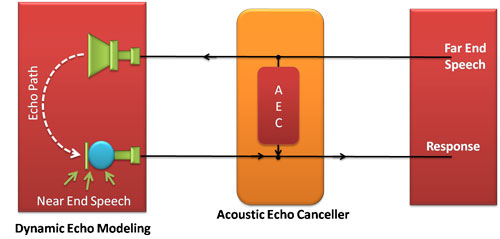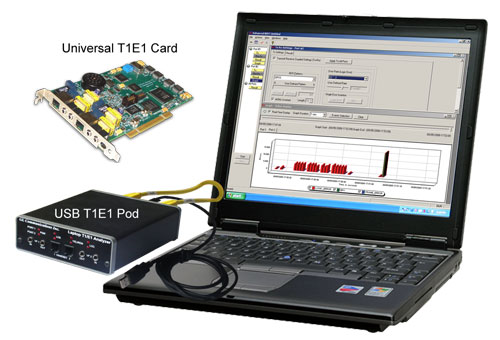Newsletter: GL Announces Acoustic Echo Simulation and Analysis
Welcome to a May issue of GL Communications' Newsletter. In this edition, we provide information and insight into our capabilities to simulate and analyze acoustic echo in a variety of environments including mobile phones, speakerphones, softphones, analog interfaces, and T1 and E1 voice processing products.
Overview
Acoustic echo (as shown below) is a common phenomenon that is encountered in many types of phone calls. It occurs when speaker output is fed back to the microphone input. This will disturb the far end speaker as they hear their own voice but delayed. Acoustic echo cancellers (AEC) are used in phones or in the network to minimize this distortion. Acoustic echo, unlike line echo, is dynamic during a call as people and speakers move about and reflections change.

In the past, modeling and replicating acoustic echo has been quite complicated often requiring a sound chamber, head and torso, etc. GL has simplified the process considerably by modeling the acoustic echo path and dynamically changing its characteristics. In effect, the echo path can be made to vary in a manner similar to the real world. Also, the echo path can be specified to mimic a "small room", a "car", a "medium size conference room", etc. Dynamism is introduced by slowly morphing the impulse response coefficients in a predetermined manner.
The above features have been incorporated into DSP operators within our DSP Operators in Windows Client Server (WCS) software. This software is available with our T1 E1 product platforms, including USB T1 E1 Analyzer and Universal T1 E1 Cards.

For comprehensive information, please visit Dynamic DSP Operation web page.
 Back to Latest News Page
Back to Latest News Page